On sewing, knitting, and the impulse to make things
I’ve always loved making things. As a kid, I did latch-hook; I made beads; I wove hemp necklaces; I painted; I sketched; I sculpted. I was always making something. I can’t remember a time in my childhood where I didn’t have several projects, of various sorts, going. As an adult, I never lost my desire to be constantly creating things, but there were long years during which I figured making things just wasn’t something I got to do anymore. There was never enough time. Or energy. Working at a law firm, I found that I was so unhappy with my work life, I had little energy after work to devote to being creative. Instead, I’d come home from work and watch TV, or read, but I wouldn’t create anything more elaborate than dinner because I just didn’t have the energy. Consequently, my creativity languished for a long time. Then, I quit my job and rediscovered unstructured free time, which has been an absolute joy. I am now an adult who gets to make things during my day. In fact, my job now requires me to be creative: I get to tell stories for a living. Best job ever, right? (Well, best job ever for me, anyway).
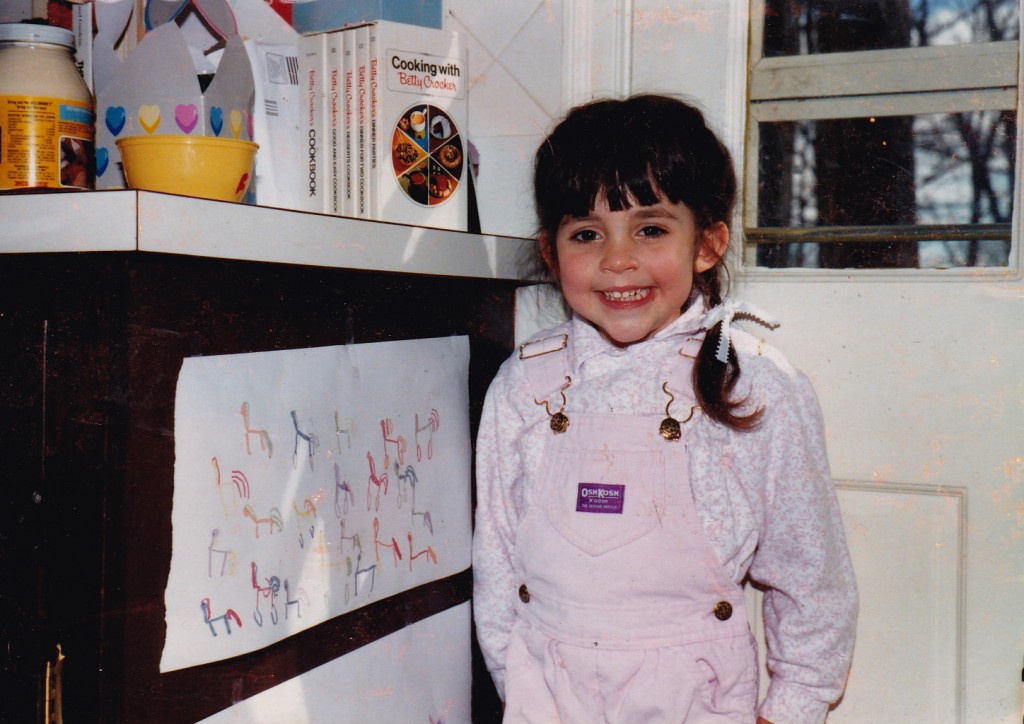
As I mentioned a while ago when I talked about knitting, I love to do activities in my downtime in which I am creating something — that is, in which I am making a product of some sort, whether it’s a hat or a casserole, that I did not have to invent from scratch. I like following a knitting pattern or a recipe and ending up with something I can be proud of, but which I did not have to pull out of thin air. I love knitting, especially, because in the end, you have a product — something you can wear or use — and, best of all, the knowledge that you made that product with your own two hands. So satisfying.
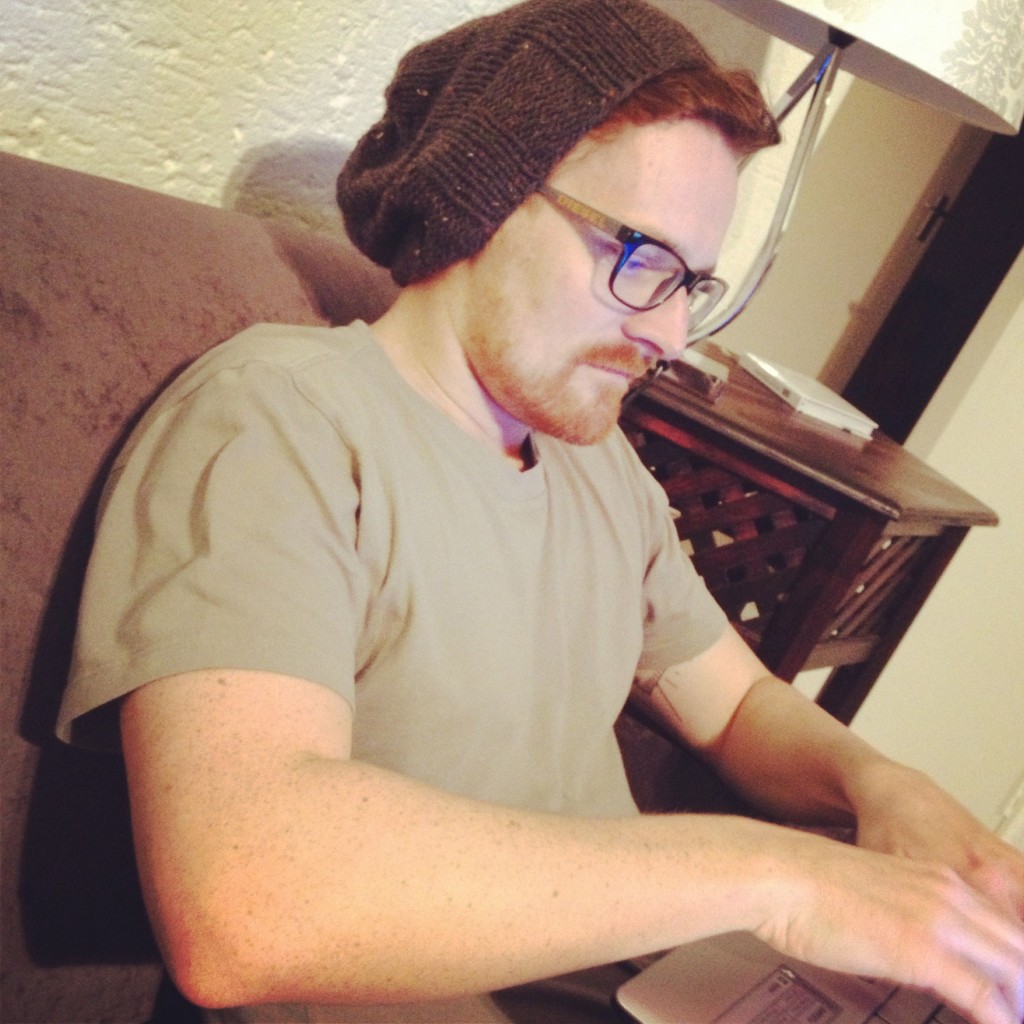
So, I decided, given my love of knitting, to seek out sewing classes in London. I’ve wanted to learn how to sew for years but never got around to it (see: law firm job), and I figured there’s no time like the present. Thus, early last week I reported for a four-day, twelve-hour Intro to Sewing class at the lovely Sew Over It in Clapham North. And I loved it! I came back from my first day of class, completed pillow cushion proudly in hand, and told Al that I was “pretty sure” I could “master” sewing. Yes, I used the word “master.” No one ever accused me of hedging my bets. I was encouraged, you see, by my early success at creating things made entirely up of square pieces of fabric sewn together in straight lines. To give you an idea, here are the projects I completed in my intro class:

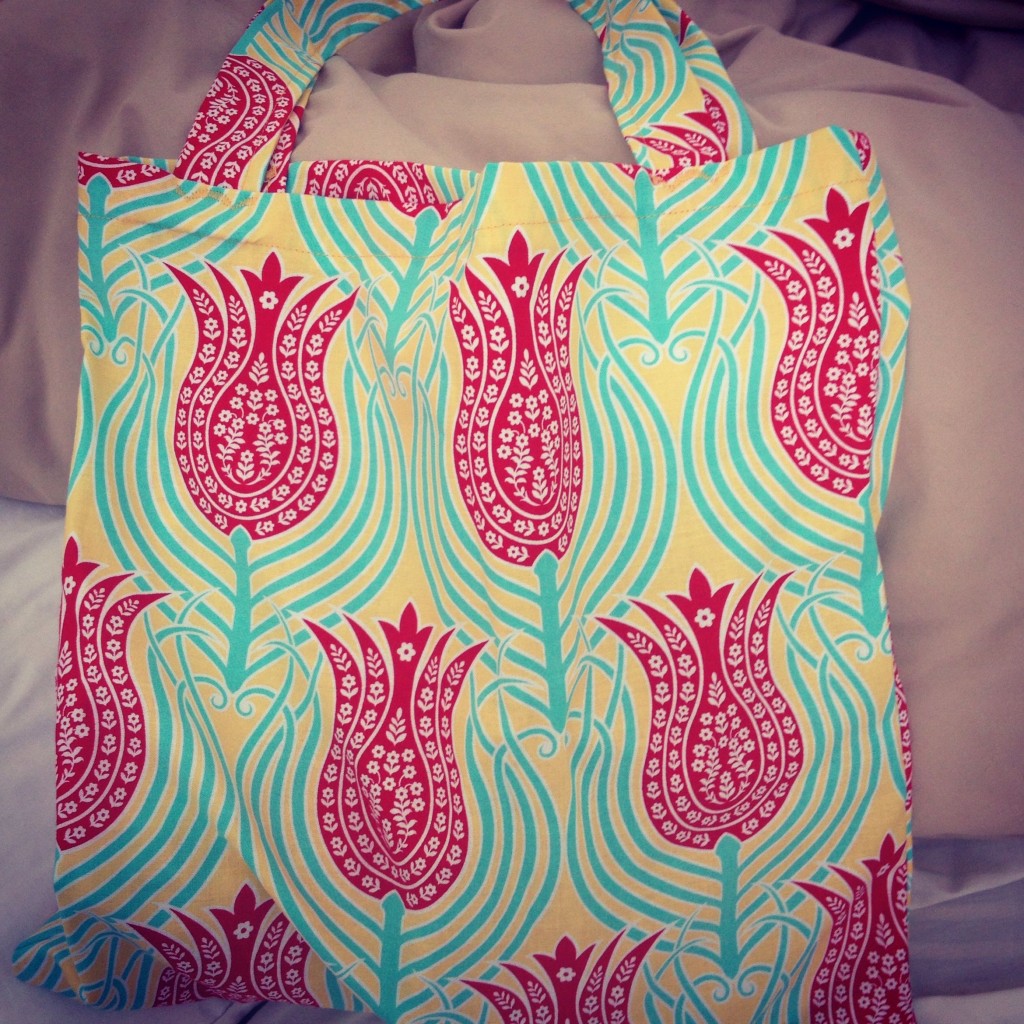
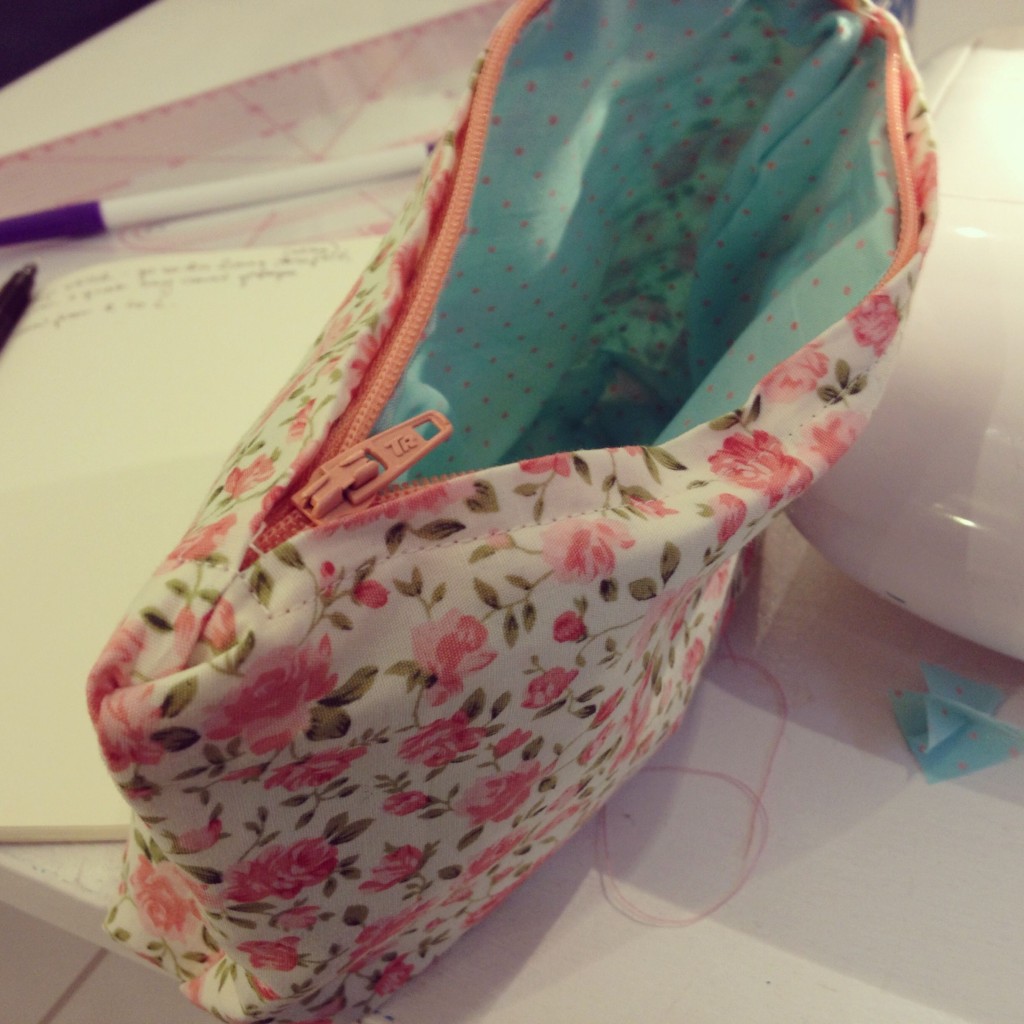
Feeling on top of the sewing world, I immediately signed up for an Intro to Dressmaking course, figuring that after another twelve hours of instruction, I’d basically be able to start a side business as a seamstress and/or make all my own clothes from here on out. But oh!, dressmaking brought me low. My first day of class was intensely humbling. We made a circle skirt, which is so named because when you hold it up, it’s in the shape of a large circle with the waistband in the middle. It sounds simple — and the pattern looked simple — but that circle skirt nearly broke me. I messed up the hem line, the waistband was bumpy, and, when the dratted thing was finally done, I found that I had made the waist just a tad too small, so that the back would not stay closed if I so much as breathed. Ugh.
I was convinced, the entire first two days of dressmaking class, that I was the dolt of the classroom. I had trouble visualizing what the teacher was telling us to do. “Stitch here,” she’d say, and I’d wonder, “But why?” I didn’t understand the why of any of it. Why do those stitches go there? What will happen if I put them somewhere else? What larger purpose are these stitches serving? This inability to visualize my final product, it seems to me, is the biggest difference between my experience with knitting and my experience with sewing. For whatever reason, perhaps because knitting is necessarily a much slower process of construction and one has time to wrap one’s mind around the contours of what one is making, knitting is just not as confusing as sewing. Sure, while knitting I may have trouble executing certain tricky maneuvers or I may accidentally mess up the measurement of a piece of work, but I generally understand why I have to do a certain thing when I see it on a pattern. With sewing, though, the patterns are just big pieces of paper, and I don’t think my spatial visualization skills are quite finely tuned enough to picture said pieces of paper arranged into items of clothing. Folds, in particular, confuse me. There are no folds in knitting.
Long story short, my first two days of dressmaking class were stressful. My Type-A, detail-oriented inner lawyer (who, let’s face it, is probably always going to be with me) was freaking out at every mistake and berating me for not understanding the instructions. I was dismayed that other people in the class seemed to zip right along, with no signs of nervous sweating. This made me even more nervous (and sweaty). I left class that day feeling discouraged, with my misshapen, ill-fitting skirt stuffed into a plastic bag.
The next day, though, we started on a simple shift dress, and things began to make a little more sense. I understood a little more clearly why I was doing things. Yes, there were certain parts of the pattern that I found confounding, but mostly, things made sense. And, in the end, my dress came out really well. It actually, believe it or not, fits me. I’ve sewn my first piece of wearable clothing. Huzzah!
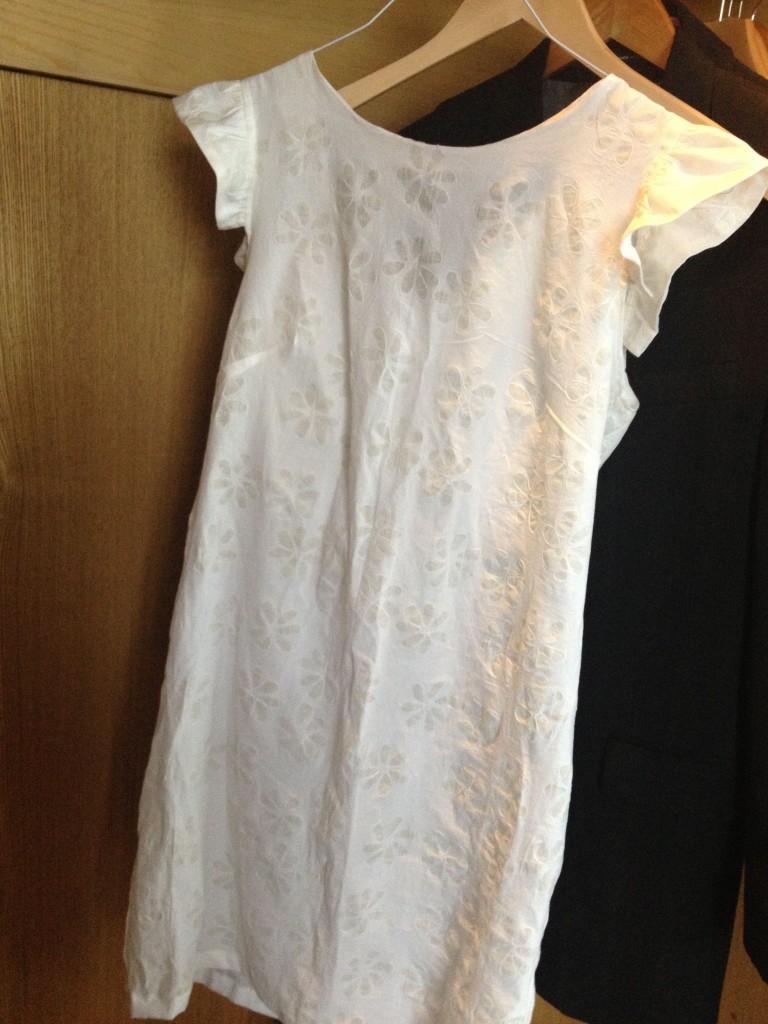
So, what have I learned from the experience of learning to sew? One, I can’t expect everything to come easily to me right away. Not to brag, but I was a bit of an (idiot) savant at knitting. I was good at it right away, and could master new skills easily by looking at a book or watching a YouTube video. No teacher required. Sewing is not like that for me, and that’s okay. It is going to take a bit more practice and patience on my part to get good at it. Second, it’s good to learn a new skill, even — and perhaps especially — if you’re not good at it right away. Keeps you on your toes. Life gets boring if you don’t have to stretch now and then, after all. On her blog The Happiness Project, Gretchen Rubin writes about the three levels of fun: challenging, accommodating, and relaxing fun. Learning to sew is challenging fun. It’s hard and frustrating at first, but as you get better at it, it gets more fun — and that’s more rewarding than coasting at something you’re already good at.
Here’s to more challenging fun, then, and to always making time for making things.
What a precious little artist! I don’t know how to break this to you, but there can be folds in knitting…